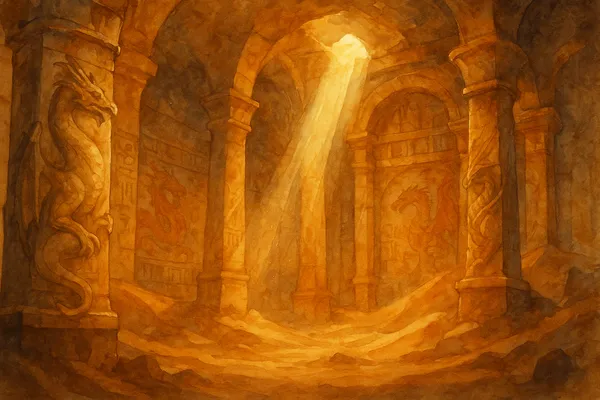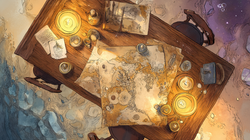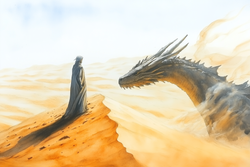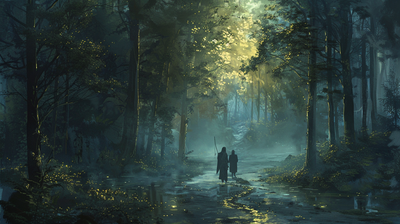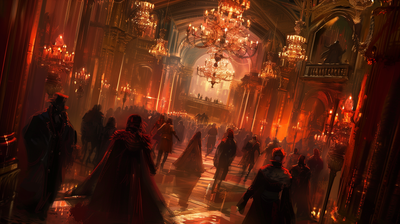This is Part 2 in my series of how I plan roleplay heavy D&D campaigns. For the rest of the posts in this series, click the button and return to the index.
Once I have the kernel of an idea, I need to build up a world around it. Even when I’m using published adventures or settings, I will flesh out the setting more. I make sure it has enough detail that my players can develop characters that are richly tied to the setting.
If I just told my players “your character needs to be tied to the setting”, where would they even begin? How would they know what to make? How would they make connections?
Here, I start very broad. My initial spark was about a person, a dragon, and the sand dunes. So, I’m looking at a desert. And this person seemed to be patrolling, in some capacity? That means there’s something nearby that needs protecting? I decided they’re patrolling city-state, for no reason in particular it just seemed like a natural fit to me.
As I develop the setting, I start to get into more and more specific questions: What type of government does the city-state have? What does law enforcement look like? What is the economy? Where do the dragons come in? What is their rank?
Once I’ve answered these functional questions, I zoom back out and ask: How did it get to be this way? Why did they land on this government? Why was it settled in the first place? Developing a history of a setting gives it character and depth; it gives the setting a lived-in feeling.
And lastly, I populate it. All those government, law enforcement, and economic groups need people to run them. I start generating dozens of NPCs. I keep it simple: name, species, age, sex, pronouns, role and a two-sentence description. ChatGPT helps enormously here.
In the case of Siqram, here are some of the details I landed on:
The city-state is thousands of years old and has a very rich guild tradition. In the past it was ruled by an emperor, who kept slaves. The slaves revolted, the populace joined them, and together they overthrew the emperor. That’s how the current government was formed.
Long ago, before the emperor, there were dragon wars. Some of the dragons sided with the city-state, and those became the crystalline dragons of the dragon-riders. A revered group of warriors once, they are now in a state of decline.
Every detail I came up with, I tried to ask why? How? What sorts of reasons would lead people to organize this way? The details here can be anything I want them to be, I just need them to be consistent with each other and the tone I’m trying to set.
At the end of this process, I had a very rich setting, with layers of history. This is what I present to my players (which I’ll talk about more in the next post).
At this point I had my spark, my players and a richly developed setting, I could invite the players in and have them start to develop characters in this world.
Next up I talk through how I help my players craft characters that are deeply tied to the setting, how I make the villain's plan, and how I use that to outline the campaign.

